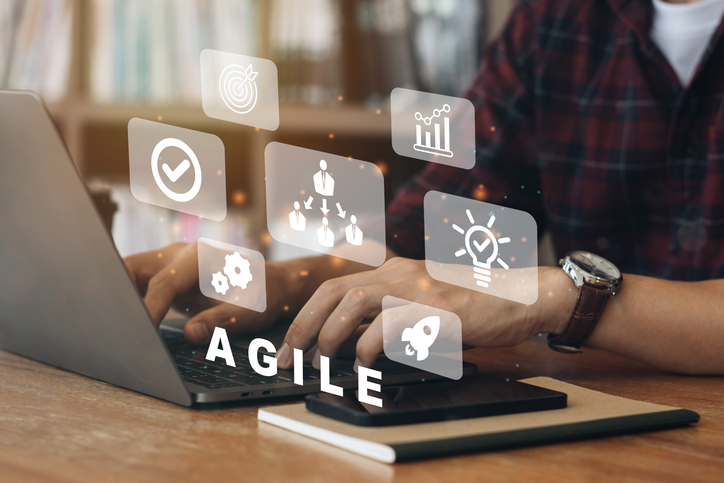
How to Support Employees through Lifestyle Retirement Planning
May 30, 2025 Written by Cynthia Orduña

Compare Providers
Download our outplacement comparison sheet
Request Pricing
Compare our rates to other providers
Retirement doesn’t look the way it used to. In the past, HR leaders braced for a “silver tsunami”—a wave of baby boomers that are expected to leave the workforce at once. But that tidal wave never quite arrived. Many older employees have continued working past age 65, fueled by better health, longer life expectancy, and a desire to stay engaged.
In 2025, retirement has become less about stopping work and more about pivoting to something new. Whether it’s starting a small business, volunteering, taking on part-time consulting, or simply having the flexibility to enjoy life, today’s employees are thinking beyond the paycheck.
This shift calls for a more holistic approach: lifestyle retirement planning.
What Is Lifestyle Retirement Planning?
Lifestyle retirement planning focuses on the non-financial aspects of retirement and what life looks like once someone steps away from full-time work. While retirement financial planning answers how someone can afford to retire, retirement lifestyle planning helps them determine what they’ll actually do.
Employees approaching retirement are asking important questions, such as:
- What will I do with my time?
- Who will I be without my job title?
- How will I stay connected, healthy, and mentally stimulated?
These questions point to a broader set of retirement goals that go well beyond the traditional focus on financial savings. They include things like post-retirement lifestyle, hobbies, relationships, purpose, and well-being. For many, the biggest barrier to retiring isn’t financial; it’s emotional.
Consider a few real-life scenarios where retirement lifestyle planning support is key:
- A senior executive who wants to step back, but is unsure how to transition leadership without letting go of their legacy.
- A technical specialist who’s eager to travel, but anxious about losing daily purpose and community.
- A mid-level manager considering a phased retirement while mentoring younger employees.
- A longtime employee whose spouse is already retired, but who fears isolation once they leave work.
In each case, financial readiness is only one piece of the puzzle. These employees need time, guidance, and space to envision what a fulfilling post-retirement lifestyle could look like, and HR is uniquely positioned to provide that support.
Why Lifestyle Retirement Planning Matters
As HR professionals, you’re stewards of the employee experience, from onboarding to advancement to offboarding. Retirement is often seen as an endpoint. But in reality, it’s a major life transition that deserves the same thoughtful support as a promotion or role change.
Proactively supporting lifestyle retirement planning allows HR to reframe retirement not as an exit, but as a career evolution. This is especially meaningful for employees who feel anxious or uncertain about what comes next. When HR creates space for these conversations, employees are more likely to leave on good terms, with a sense of purpose, dignity, and direction.
What’s more, the benefits of retirement lifestyle planning extend far beyond individual well-being to directly support organizational health as well.
Lifestyle retirement planning can:
- Reduce the emotional and logistical anxiety many employees feel about retiring.
- Encourage smoother offboarding and timely knowledge transfer.
- Increase the likelihood of mentoring and succession planning.
- Prevent delayed retirements that can create bottlenecks in career advancement.
- Deepen alumni engagement to utilize former employees as contractors, board members, or brand ambassadors.
- Demonstrate that your organization values employees across the full arc of their careers.
- Align with DEI goals by honoring the diverse life stages and needs of your workforce.
In short, helping employees plan for life after work isn’t just the right thing to do, it’s a strategic move that strengthens culture and continuity.
If you’re looking for the right partner to help you successfully support your organization through your employees’ retirement, click below to speak with one of our experts and learn more about Careerminds’ offerings.
What Factors Should Be Considered in Retirement
For HR professionals supporting employees through this transition, it’s important to understand the range of factors that influence a fulfilling retirement.
Key considerations include:
- Structure and routine: After years of work schedules, many retirees struggle with unstructured time. Helping employees think about how they’ll spend their days in retirement can ease this transition.
- Health and wellness: Retirement planning should include time for physical activity, mental stimulation, and preventive care. Encourage employees to factor in habits that support long-term retirement well-being.
- Relationships and social connection: Leaving work often means losing a built-in community. Consider how you can help employees think about maintaining social ties or building new ones outside of work.
- Location and lifestyle: Some retirees may want to downsize or relocate. Others may want to stay rooted in their communities. Helping employees imagine their ideal day-to-day life can clarify the right path forward.
How Employers Can Support Lifestyle Retirement Planning
Here are tangible ways to provide support:
- Start the conversation early: Don’t wait until an employee announces their retirement plans. Include lifestyle considerations in mid- to late-career development conversations or stay interviews.
- Offer lifestyle planning workshops: Bring in retirement coaches or facilitators to help employees explore non-financial aspects of retirement, such as purpose, structure, and identity.
- Create peer support spaces: Encourage cross-generational dialogue or set up affinity groups for employees planning their retirement. These spaces can reduce stigma and build community.
- Provide resources and reflection tools: Share journaling prompts, planning worksheets, or guides that help employees think through what they want from retirement beyond just money.
- Normalize phased and flexible options: Build policies that allow for part-time roles, consulting work, or mentorship programs. These options can ease the emotional and logistical transition for employees.
- Involve managers thoughtfully: Train people managers to engage in compassionate, future-focused conversations with employees exploring retirement, without making assumptions based on age.
Lifestyle Retirement Planning: Key Takeaways
Retirement isn’t a full stop anymore, it’s a next chapter. And in this chapter, employees are looking to their employers for more than just financial education. They want help creating a post-retirement lifestyle that supports their well-being, relationships, and sense of purpose.
HR teams that offer lifestyle retirement planning as part of their benefits strategy are setting a new standard—one that’s human-centered and aligned with today’s workforce values.
Whether through internal coaching, workshops, alumni networks, or phased retirement options, integrating lifestyle support into your retirement planning efforts ensures that employees feel seen, supported, and celebrated as they make one of life’s biggest transitions.
Here are the key takeaways:
- Lifestyle retirement planning helps employees explore what they want life to look like after full-time work, including retirement activities, identity, purpose, health, and social connection.
- The emotional side of retirement is often overlooked. Fear of isolation, loss of structure, or uncertainty about next steps can be bigger barriers than money.
- As stewards of the full employee lifecycle, HR professionals can reframe retirement as a career evolution, not just an offboarding process.
- Supporting retirement lifestyle planning strengthens organizations. It improves knowledge transfer, succession planning, alumni engagement, and overall employee experience.
- Lifestyle retirement planning aligns with DEI. It acknowledges and supports the diverse needs and retirement goals of older workers, affirming their value at every stage.
- Tangible ways that HR can support employees include:
- Initiating early, thoughtful conversations.
- Offering planning workshops and coaching.
- Creating peer support or affinity groups.
- Providing tools for reflection and planning.
- Building flexible retirement and mentorship pathways.
- Training managers to engage in supportive, bias-free discussions.
If you’re not sure how to guide employees through the emotional and logistical side of retirement, you’re not alone. At Careerminds, we can coach your leaders on how to have thoughtful, supportive conversations and build programs that make lifestyle retirement planning a core part of the employee experience.
Ready to learn more? Talk to our experts today to explore how Careerminds can support your organization.
In need of outplacement assistance?
At Careerminds, we care about people first. That’s why we offer personalized talent management solutions for every level at lower costs, globally.



